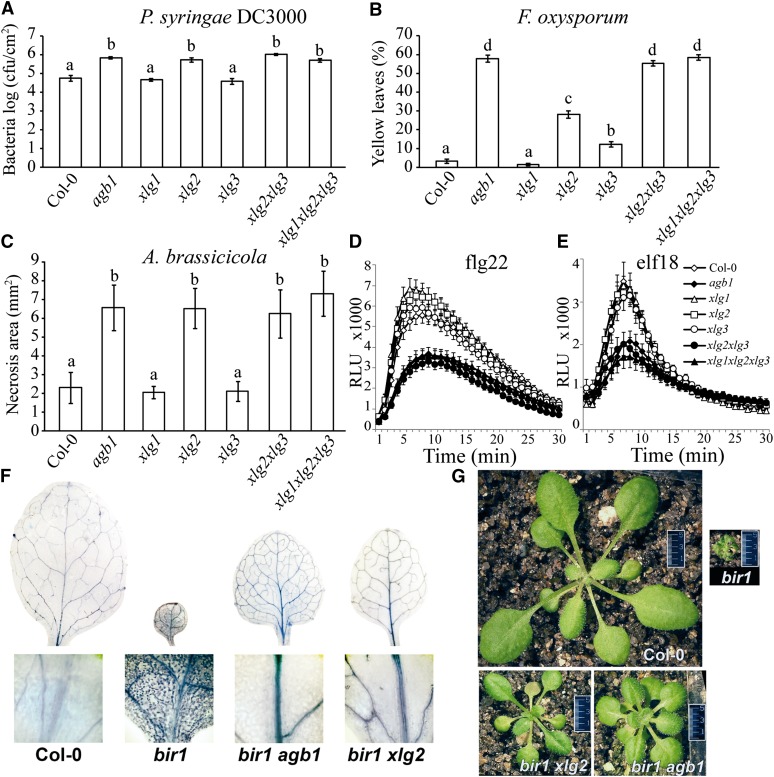Figure 1.
XLGs and AGB1 have similar contributions in the defense against pathogens, response to PAMPs, and PCD. A, Bacterial growth of Pst DC3000 at 4 d post inoculation (dpi). Five-week-old plants were sprayed with bacterial solution (OD600 = 0.4). Four plants per genotype (seven leaf discs per plant) were harvested for bacterial titer. B, Percentage of yellow leaves 7 d after F. oxysporum infection. Three-week-old plants (n = 20) were inoculated. C, Area of necrosis 7 d after A. brassicicola drop inoculation. Five-week-old plants (n = 10) were assayed. D and E, ROS measurements (relative luminescence units [RLU] plotted against time [min]) after treatment with 1 µm flagellin22 (flg22; D) and 1 µm elongation factor thermo unstable (elf18; E). Leaf discs of 5-week-old plants (n = 12) were assayed. Each dataset shows mean ± sem. Experiments were repeated at least three times with similar results. For A to C, the letters represent statistically significantly different groups based on one-way ANOVA with Tukey’s multiple comparison method. A difference between each group represents P < 0.0001 (A and B) and P < 0.05 (C). F, Trypan blue stain for cell death showing that agb1 and xlg2 mutations suppress PCD caused by the bir1 mutation. Leaves of 3-week-old plants were stained. G, Both agb1 and xlg2 mutations partially suppress the bir1 phenotype. Rosettes of 3-week-old plants are shown.

